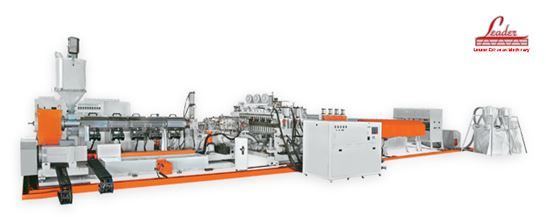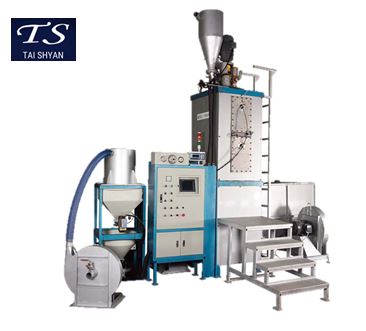Fluid power is a well-established technology; but in case you haven’t noticed, electric actuators have come a long way in the past ten years. But does that mean that fluid power systems are obsolete?
To answer that question, I spoke to experts from automation suppliers Festo and SMAC. Festo carries both electric and pneumatic technology, while SMAC specializes in a variety of types of electric actuators from ball screw-driven devices to linear motors.
According to Jim Ackert, applications specialist at Festo, fluid power systems may not be going anywhere. In many applications where they were once ubiquitous, however, electrics are pushing in.
“For the time being, I think all three technologies have their place in industry,” said Ackert. “But, the flexibility of electric drives, coupled with the fact that the price of electric components has been steadily coming down over the years, makes them more popular and affordable than they once were.”
Tradeoffs Between Electric, Pneumatic and Hydraulic Actuators
It may sound frivolous, but choosing the right actuator motor technology is a lot like choosing a role-playing game character: the Fighter, Mage and Thief are classic character archetypes in video games, with trade-offs in damage, health and speed. When it comes to actuators, the trade-offs are force, positioning accuracy and speed.
In general, the overlap between the force and speed capabilities of fluid and electric actuators is growing. Electric actuators are even making their way into heavy equipment presses and other traditionally hydraulic-dominated markets.
Flexibility
Some applications require more flexible equipment than others. Similarly, the different types of actuators vary in flexibility. Because of this, considering flexibility is often a good place to start when deciding on an actuator.
For this consideration, you need to look at your application. Will your setup need changes in the future? How many positions will your actuator need to reach?
For example, if you are picking objects from one conveyor and placing them onto one of two conveyors, you need three positions. With pneumatic cylinders, this would require at least two cylinders, either set against one another or set up separately, one for each conveyor. With electrics, a position can be set at any point along the device, and you can easily program multiple points.
Taken as a whole, electrics are also the most flexible when it comes to force. Take this Curtiss-Wright ballscrew-based actuator, which pushes up to 40 short tons. At the other end of the spectrum, linear motors breeze by at up to 10 m/s (in the case of Festo’s toothed belt actuators). This broad range of specifications means that whatever your needs are, there is an electric device out there that fits them.
If your application is high-mix, in the sense that your setup will need to handle extremely high forces as well as lower forces, it can make sense to choose a hydraulic system, ensuring that your actuators will be able to handle any force you throw at it.
In terms of flexibility, the primary benefit to pneumatics is that they are simple to install and operate. If you need to change from a 6” stroke to a 12” stroke, it will be relatively simple to swap the cylinder. However, this wouldn’t be preferable in a real-world situation—and if more complex changes are needed, the time and cost will start to add up.
Cost
The biggest disparity between what you see at trade shows and what’s really in use on shop floors across the country is the practicality of cost. Sure, that collaborative robot tending a 3D metal printer while streaming data to an iPad is cool, but is it practical?
For manufacturing engineers, the name of the game is to get the job done efficiently and on budget. That’s part of the reason pneumatic actuators probably aren’t going anywhere, despite being made technically obsolete by advances in electric technology—and electric motors and drives are getting cheaper every year. Still, comparing Bimba’s original line of pneumatic and electric linear thrusters shows that the electric version costs approximately five times more.
Hydraulic systems are the most expensive, and require the most maintenance and equipment to operate.
Types of Electric Linear Actuators
Mechanisms of electric linear motion range from ball screws to rack and pinion gears, to linear motors. Each has different strengths and weaknesses.
According to Helix Linear Technologies, there are two main types of screw-driven actuators: ball screw and lead screw. Ball screw-driven actuators convert the rotary motion of a stepper or rotary motor to linear motion by means of a ball screw and ball nut arrangement.
In essence, this mechanism takes the principle of a nut riding on a threaded rod and adds ball bearings to decrease friction. However, these mechanisms are not self-locking, and depending on the application may need additional braking mechanisms, such as vertical installations. Ball screws also require regular lubrication.
Where a ball screw uses bearings to decrease friction, the lead screw uses a low-friction polymer or bronze nut. The lead screw is therefore much less expensive than other types of linear actuator, but the friction is higher. This means you may need higher motor torque to drive the same load on a less-efficient lead screw mechanism than for a comparable ball screw actuator. The added friction also increases wear and operating temperature, and lead screws need to be replaced more frequently than other types of actuators.
Screw drive actuators can deliver extremely high forces, because the force is distributed along the entire helical path of the nut around the screw. They can also be highly accurate. However, drawbacks to this system include faster wear than non-contact systems. According to Ed Neff, President of SMAC, you can reasonably expect a ball screw to wear out in the same time frame as a pneumatic cylinder in certain applications.
- Belt and Gear-Driven Actuators
Belt-driven actuators are like conveyor belts. According to Misumi, belts are typically made of fiber-reinforced elastomer, and usually have teeth for interfacing with the pulleys to eliminate slippage. A carriage rides on top of the belt to carry the payload.
The interesting thing about belt systems is that they scale in travel distance more efficiently than screw drive systems. All you need is a longer belt, rather than a longer precision machined helical screw. Another advantage of belt-driven actuators is that they have fewer moving parts, so maintenance is simpler. However, belts will require re-tensioning as part of scheduled maintenance.
Belt-driven systems are not ideal for high loads due to the need for thicker belts and their susceptibility to shock loads. Because belt materials are often prone to elongation over time, accuracy eventually suffers.
While belt drive systems win out over screws on travel distance, belt tensioning becomes difficult at longer distances. In these situations, according to Danielle Collins of LinearMotionTips.com, rack and pinion systems win out. Rack sections can be laid out to virtually any length.
Some rack and pinion systems use a fixed rack and moving pinion, while some use a fixed pinion and moving rack. At longer stroke lengths, moving pinion systems are more efficient because the moving mass is lower. However, cable management is essential in these cases.
In gear systems, backlash is always a consideration, but today’s high-precision machining can deliver micron accuracy in gear mating, so the accuracy is comparable to belt driven systems. Some systems also use a split or dial pinion system to remove backlash.
In both belt and gear driven systems, the guidance components usually require regular lubrication.
Linear motors are typically the most expensive type of electric linear actuator, and they’re also the fastest and most dynamic.
Where an electric motor consists of a rotor inside a stator, a linear motor is a motor unrolled. Because linear motors have lower friction than other devices, some linear motor products can last well over a hundred million cycles, according to Neff of SMAC.
When the payload mounting surface is precision-machined steel or granite, the device is called a stage. Across the industry, the term “stage” refers to a higher-accuracy device.
Simple Hydraulics vs. Servo Hydraulics
According to MachineDesign.com, while intermediate-stroke positioning is possible with simple hydraulics, it requires manual control by an operator. The same goes for speed and force control. For computer-controlled or automated position, speed and force control, servo drives are required.
With hydraulic systems, the total footprint of the system is much larger than comparable electric systems. Hydraulic systems require hoses, fittings and valves, as well as a hydraulic power unit (HPU) which has a large footprint. While hydraulic cylinders save space at the cylinder, they more than make up for it with the bloated footprint of their control systems. Servo hydraulics requires even more space, with a control cabinet or PLC.
How to Choose the Right Actuator for Your Application
Now that we’ve gone over the basics of the different types of actuators, choosing an actuator all comes down to your specific application. Consider the following questions:
Force/Payload
- High Force – Thousands of Pounds
For extremely high forces, such as a press application or a gantry system for heavy equipment, it comes down to hydraulic or electric. The next question to consider is the cycle rate, to determine which option would wear faster and require more maintenance over the life of your system. Ask your vendor about the maintenance and wear of each product.
The next factor to consider is that hydraulic oil is messy. If a spill occurs, cleaning up large volumes of oil can be costly and time consuming. Even if a leak does not occur, oil may creep and slowly film surfaces of your machine. In clean environments such as electronics or food processing, the possibility of oil leakage may eliminate the hydraulic option.
- Medium Force – Tens to Hundreds of Pounds
When your required force is within the range for all three options, consider your positioning needs.
Will the motion require more than 2 stop positions? If so, a pneumatic system will be complicated to implement, and require manual adjustment. However, pneumatics may still be the least expensive option. The next question to ask is the level of accuracy required. In assembly tasks, for example, you may require fine-grained accuracy, in the tenth-millimeter range. If so, electric actuators may be the best option. Pneumatic systems are typically accurate to a few millimeters.
The last thing to consider is the cycle rate of your application. While linear motors are more expensive than other types of actuators, over many cycles (100 Million+) they keep going strong, while other systems will need replacement.
Consider the accuracy and dynamic motion requirements of your application. As Ed Neff of SMAC says, “dumb” motions, such as a simple push, may require no more than a simple pneumatic cylinder. However, any time you want more control over the position or speed of the device, you should consider electrics.
Which Actuator is Best?
When making a decision between electric and fluid-power actuators, the key considerations are positioning accuracy, speed and payload.
Fluid power systems excel in traditional applications where the main advantages of electric systems are overkill, making their higher cost unjustified. However, electrics are still developing, with the technology advancing every year. Costs are coming down for even the most advanced electromechanical actuators, and some experts believe that one day fluid power systems will be completely obsolete in the linear motion industry.
However, today it’s common to see a mix of technologies, even on one machine. A large press, for example, could use a large hydraulic cylinder, with electric actuators for loading/unloading and pneumatic actuators for gripping parts.
If you have any interest in learning more information about actuator motor, please try to check out the site of Hsiang Neng DC Micro Motor Manufacturing Corp. – the company specializes in kinds of DC motors, micro motors, gear motors, etc.
Article Source: engineering.com



